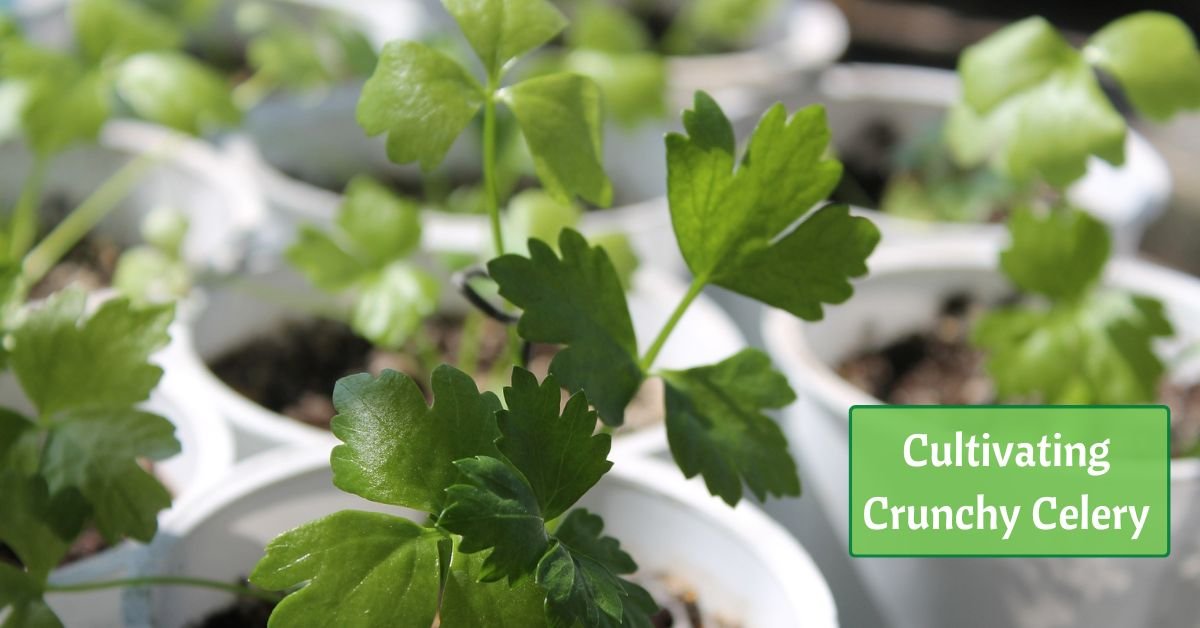Delving into the art of cultivating celery in your garden opens a world of crisp, flavorful possibilities. This cool-season crop requires a delicate balance of climate, soil conditions, and attentive care.
This guide explores the essential elements in growing celery, including climate, soil preparation, planting methods, care techniques, and harvesting.
Climate Considerations
Celery flourishes in regions with moderate temperatures ranging from 60°F to 70°F (15°C to 21°C). While it can tolerate some heat, gardeners must be cautious; prolonged high temperatures may cause the celery to bolt, affecting its overall quality. Choosing the right time to plant is crucial for a successful harvest.
Soil Type and Preparation
For optimal growth, celery prefers well-draining, fertile soil with a slightly acidic to neutral pH between 6.0 and 7.0. Elevate your soil quality by incorporating generous amounts of organic matter such as compost to improve fertility and moisture retention. Additionally, a layer of mulch around the plants aids in regulating soil temperature and suppressing weeds.
When to Plant
Embarking on the celery-growing journey begins with careful timing. Commence by starting celery seeds indoors, a prudent 8 to 10 weeks before the anticipated last frost date. That means you could be planting in January or February, depending on where you live!
Celery seeds possess a prolonged germination period, calling for patience. Transplant the robust seedlings outdoors when the soil temperature reaches 50°F (10°C), ensuring that the threat of frost has lessened.
Order Celery Seeds
Planting Methods
Celery seeds are minuscule and delicate, so you need a fine touch during planting.
Sow the seeds in trays or seedling containers, gently pressing them into the soil surface without covering them. Light is crucial for germination, so don’t bury the seeds too deep; about 1/8 inch is optimal. Maintain consistent moisture and warmth to aid the germination process.
Seedling Transplantation
Transplantation also calls for careful handling. Space the seedlings about 8 to 10 inches apart in rows for optimal growth. This will provide ample room for the robust development of each plant. Dig holes roughly 4 inches deep, accommodating the root system and allowing for stable anchorage.
Care and Watering
To ensure the success of your celery crop, maintain a consistent level of moisture throughout the growing period. Avoid waterlogged conditions that lead to root rot, but don’t let them submit to drought stress.
Mulching around the plants aids in retaining moisture and mitigating the need for frequent watering. Additionally, periodic feeding with a balanced fertilizer strengthens the plants, contributing to robust growth.
Pest and Disease Management
Celery is known for its resilience but it is not immune to pests and diseases. Regular monitoring is essential to detect early signs of infestation.
Employ natural or organic control methods, such as companion planting or insecticidal soap, to deter pests. Adopting preventative measures like crop rotation and proper spacing mitigates the risk of diseases, ensuring the overall health of your celery crop.
Knowing When to Harvest Celery
It takes a while for your celery to reach maturity. You can expect to wait 85 to 120 days after transplanting for good stalks. That’s a total of 17 to 27 weeks from planting seeds indoors! For fully mature plants, you could wait a couple of weeks longer.
Harvesting celery requires a keen eye for maturity indicators. Stalks should be approximately 8 to 12 inches tall and have a vibrant green hue. Outer stalks mature first, and if a milder flavor is preferred, harvesting the inner stalks at a later stage is recommended.
Conduct harvests in the morning when the stalks are at their crispiest. This means they’re bursting with moisture and will offer the best culinary experience.
Celery Harvesting Techniques
When the time comes to reap the rewards of your labor, utilize a sharp knife to cut the celery stalks at the base, just above the soil level. Carefully avoid damaging adjacent stalks or the plant’s central growing point to encourage regrowth for potential subsequent harvests. Harvesting in the morning ensures that the stalks are at their crispiest, imparting the best flavor to your culinary creations.
Cultivating celery in your garden is a nuanced and rewarding process. It requires a combination of knowledge, patience, and attention to detail. By understanding the unique needs of celery, you set the stage for a bountiful harvest. Embrace the journey from seed to table, and relish the joy of nurturing this versatile and nutritious vegetable in your own backyard.










